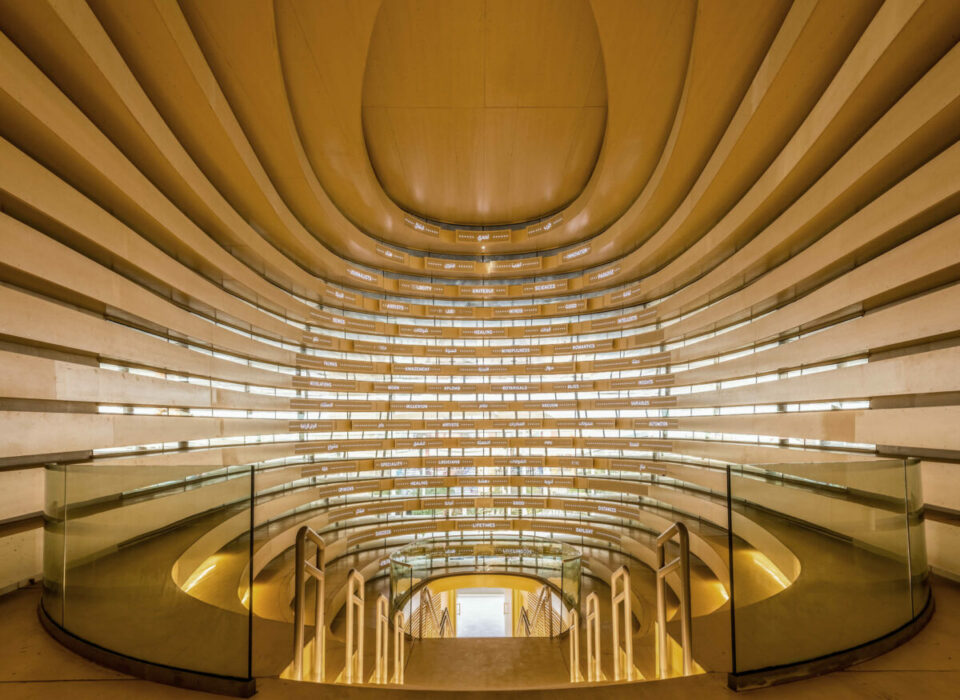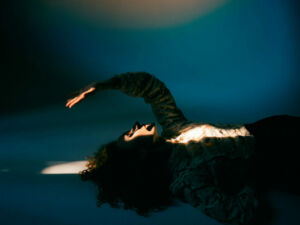Behind any magician’s seemingly perfect sleight of hand is a series of calculated machinations – levers, pulleys, props and careful planning. Such is the role of a stage and set designer, who does the labour of developing and building temporary, imagined worlds that make us believe, wholeheartedly, in a meticulously organised illusion – at least, for a few hours. Theatre has been around for centuries, and so have its makers. However, a rather new phenomenon is the transition of its designers into veritable artists, toeing their way back and forth across the creative spectrum between stage design and fine art, towards a distinct medium of its own: installation.
The medium has a younger, relatively under-theorised history, emerging approximately in the mid-20th century. The first documented use of the term “installation” with regards to art, as noted by the Oxford English Dictionary, was as recent as 1969. It’s described as being either temporary or permanent, but always three-dimensional. Installation art is usually site-specific and caters towards transforming viewers’ perceptions of a particular space in service of a story. In short, it is physical narrative-making. Combining the logistical flair, vision and precise execution of a set designer with a fine artist’s sculptural and / or intellectually oddball, out-of-the-box approach, the installation artist does not just create a work, but also the experience of it. Ideally, all the senses are accounted for, breaking the seam between reality and artifice and transporting the audience to a different world altogether.

One might quickly imagine the work of famed Japanese artist Yayoi Kusama (b. 1929). Her Infinity Mirror Rooms, on view at the Tate Modern in London, are filled with masses of shifting lights reflected by surrounding mirrors and pools. They make the viewer feel as if they have entered a box of glitter, and are amongst the world’s most Instagrammed artworks. Thousands of people snap mirror selfies amidst her seas of twinkling sequins. It’s ethereal, fairytale-like, highly picturesque. The work of international art collective teamLab is similar, welcoming us into rooms of cascading colourful LEDs that cause us to forget where our bodies start and end.
Fifty-two-year-old British artist and stage designer Es Devlin (b. 1971) takes the medium of installation art and blows it up, bending it into myriad shapes of spectacle, performance and storytelling: theatre productions, music, opera, dance, fashion shows and more. She has been a longtime collaborator of Kanye West’s concerts, and has worked with ABBA, Adele, Beyoncé, Lady Gaga, Miley Cyrus, U2 and The Weeknd, amongst others. In 2012, she designed the closing ceremony for the London Olympics, and then the opening in Rio four years later. Her list of projects and collaborations unfurls like an endless scroll, with each new piece of work seemingly grander and more ambitious than the last. In a 2016 New Yorker article, Andrew O’Hagan writes: “Each of her designs is an attack on the notion that a set is merely scenery … [Devlin] is in demand because she can enter the psychic ether of each production and make it glow with significance.”
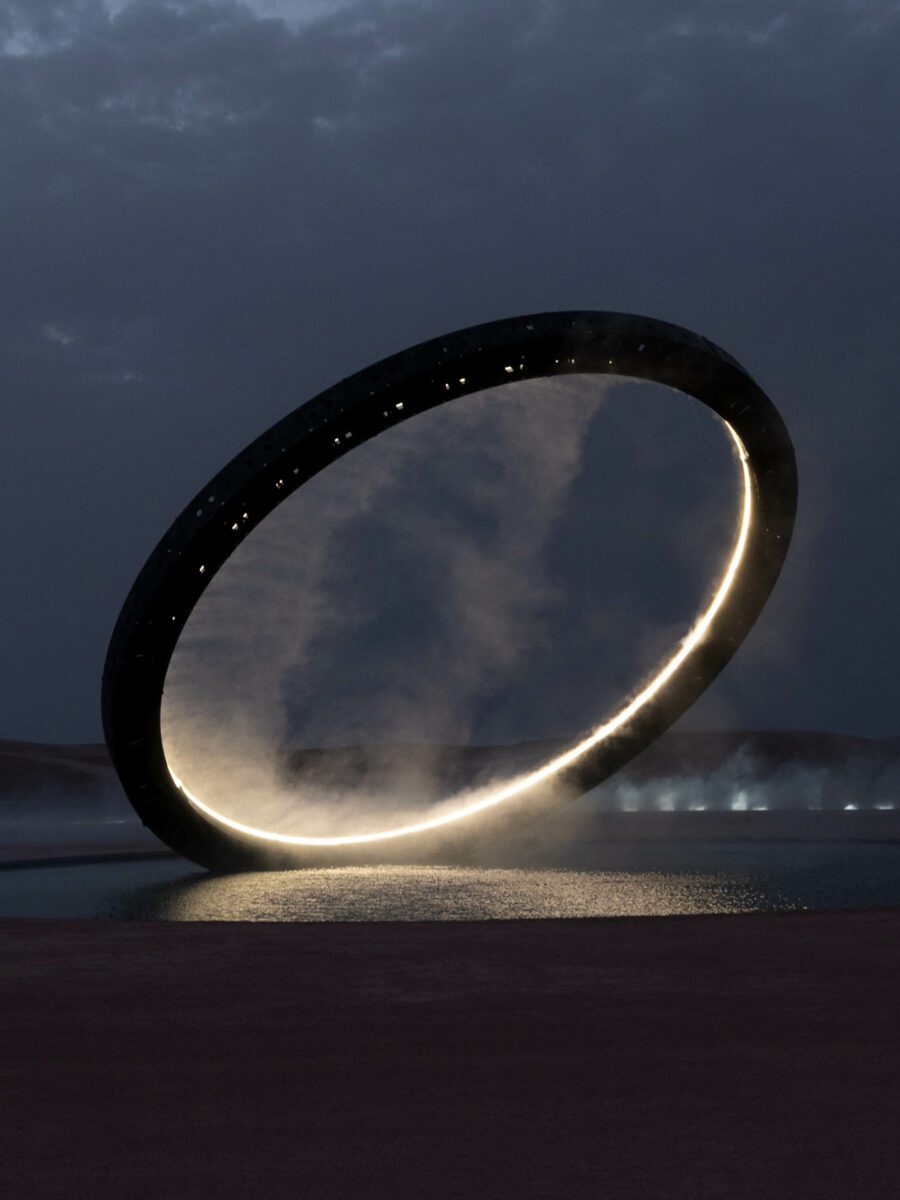
A striking example: for Cyrus’ 2014 Bangerz arena tour, at a time when the pop star’s image was fast swivelling away from purported Disney childhood innocence, Devlin designed the concert entrance as a huge tongue – by now synonymous with the star’s new persona – protruding out of a giant model of Cyrus’ head. Devlin describes it as “a sculptural portrait of a young woman rewriting her character and her script.”
Devlin entered this field of work, she proclaims, upon the realisation that “a group of tightly packed people could be greatly moved sitting together in the dark.” Having studied English Literature for her undergraduate studies at Bristol University, she went on to take a Foundation Course in Fine Art at Central Saint Martins, coming to specialise in theatre. She took on several work experiences, and wound up transforming the sets of the Bush Theatre in West London before going on to the National Theatre in 1998 to work on a revival of Harold Pinter’s Betrayal. These projects helped build her a reputation as sturdy and innovative as her sets.
The artist recalls a pivotal childhood moment, where she’s standing in a long, sunlit corridor, at music school, whilst hearing snatches of various rehearsals overlay each other. “I see my practice in light, sculpture, theatre, music and text as a 28-year extension of that corridor.” The memory and its consequences are dream-like, nearly fantastical, given the grand scale of what Devlin has come to conjure and achieve since then. “A theatre maker’s daily practice involves imagining worlds that don’t yet exist,” she remarks.
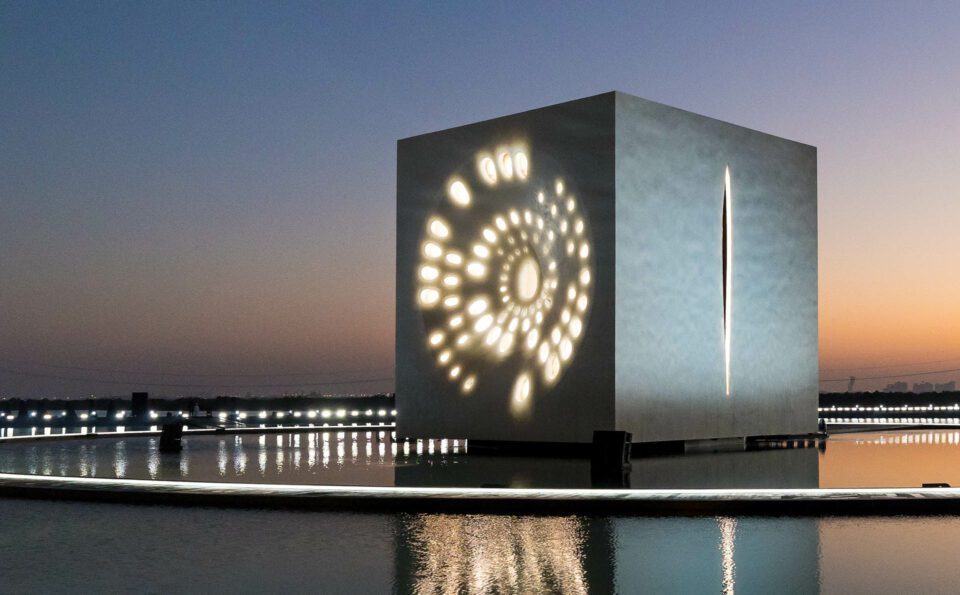
Her creative influence is infectious, with collaborator and friend Pharrell Williams describing her as embodying a “turning point.” “When you meet with her, she literally turns things around with her perspective. She’s a walking turning point for anyone she interacts with.” This comes from a 2020 conversation between Williams, Devlin and Yana Peel, included in a brand-new publication from Thames & Hudson entitled An Atlas of Es Devlin. It spans over 900 pages and delves into Devlin’s archives and projects, with essays and commentaries by both the artist and her collaborators, such as Benedict Cumberbatch, Bono, Brian Eno and Hans Ulrich Obrist, to name a few. The artist describes the volume as “an attempt … to seek the connections, recurring interests and forms that have resurfaced throughout [her] practice.” The book, as an object, is a careful and illustrious construction, much like a set. It’s art, with elaborate folds, cut-outs, mirrors and various paper types; the publication’s sculptural design is credited to Daniel Devlin.
Edited and introduced by Andrea Lipps, Curator at Cooper Hewitt, Smithsonian Museum of Design in New York, An Atlas of Es Devlin accompanies the launch of a major monographic exhibition of the same name. It involves Devlin installing her entire archive – spanning three decades– across the third floor of the museum, exhibiting more than 300 sketches, paintings, illuminated paper cuts and projection-mapped miniature sculptures, including previously unseen small-scale works that form the basis for larger projects. Visitors will also be able to enter a replica of Devlin’s London studio containing her materials, tools and works-in-progress where, as the room darkens, projections will bring the space to life – a meta moment of an installation about an installation artist. The show also incorporates and acknowledges the essential role of Devlin’s myriad collaborators, from lighting designers to production managers and musicians. It demonstrates the networked expansiveness, as well as personable intimacy, of her approach.
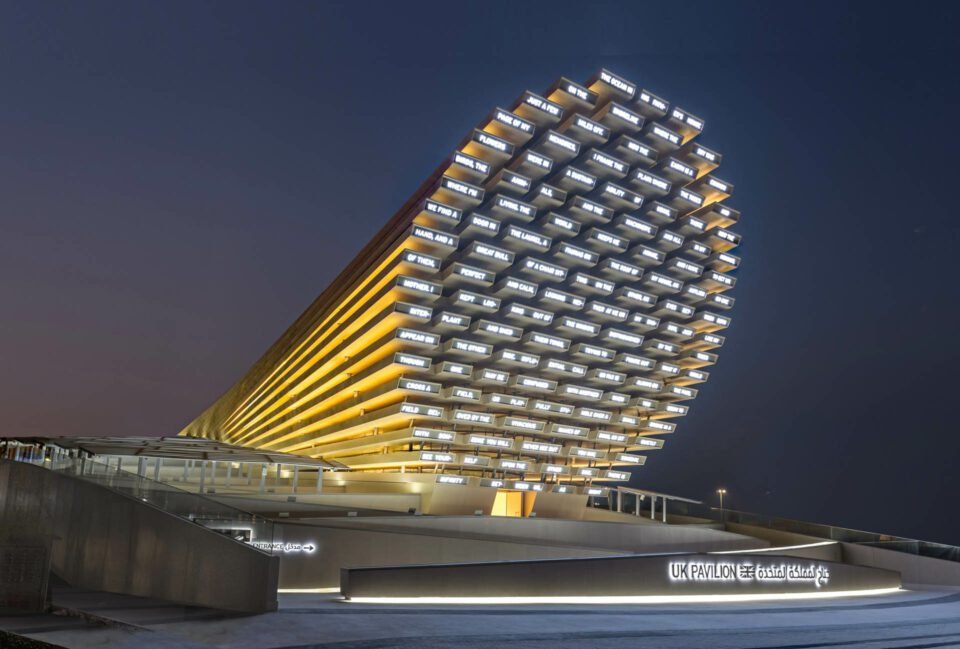
Lipps calls Devlin an “experiential storyteller … a composer of space, a sculptor of time and engagement.” Importantly, her works move beyond being visually interesting narrative supports. Instead, they are actively engaged with inciting something worthwhile, triggering human malleability and changeability. After all, Devlin sees an audience as “a temporary society, a community that arrives in one state, sits closely together, in thought, in the dark, for the next few hours, and departs in an altered state. The architecture of their minds is redrawn by new thoughts and feelings.” Therein lies the purpose of Devlin’s wide-ranging, multidisciplinary practice: to spur people towards critical engagement. Her designs are far from mere aesthetic experiences, but instead form palimpsestic narratives akin to novels with multiple chapters. The stories inside are multilayered, like cakes, offering a vital mental “turning point.”
This sense of community and collaboration is perhaps best exemplified by Devlin’s UK Pavilion, designed for the Dubai World Expo in 2021. Every visitor was invited to add a word as they entered the “giant wooden musical instrument.” The text then emerged, via AI, as part of a 20-metre collective poem on the building’s surface. Devlin’s interest in both literature and technology is evident, with quotes from novels and snippets of poetry cited as inspiration for several projects. The design for Saint Laurent by Anthony Vaccarello’s Mens Spring/Summer 2023 show, for example, was inspired by Paul Bowles’ The Sheltering Sky (1949), placing a giant ring of light in the Agafay Desert. Time and again, Devlin takes art and turns it into something different.
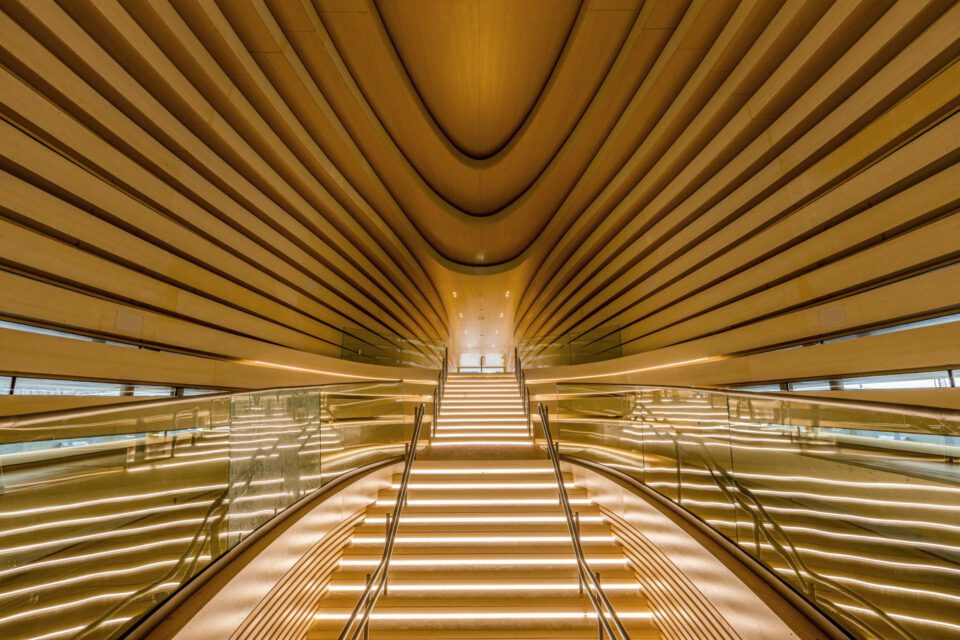
Another key strand is Devlin’s engagement with the climate. In the new book, she tells Hans Ulrich Obrist about her work on the extinction crisis. She is inspired by a quote from poet Alexis Pauline Gumbs, which reads: “We have the opportunity now, as a species fully in touch with each other, to unlearn and relearn our patterns of thinking and storytelling in a way that allows us to be actually in communion with our environment, as opposed to a dominating, colonialist separation from it.” Consequently, Devlin’s work Forest of Us, for Pace Gallery’s Superblue Miami, conceptually connects trees with lungs through a “maze” of “bronchial branches.” The work asks us to return to our breath and to confront our mortality – not just as bodies, but as a world. The work led to a series of temporary forests: Five Echoes in Miami, Forest for Change at Somerset House and Conference of the Trees at the Climate Change Conference in Glasgow for COP26. “Like Shakespearean forests of transformation, you enter in one state and you emerge transformed.”
The pattern that appears from Devlin’s enormous archive, whether it’s her production design for an Adele concert, the stage set for Cumberbatch’s Hamlet or a climate-motivated art installation, is not to recreate an existing narrative, but to reshape that story so visitors may leave renewed. Her ideas are so valued because she can make that sense of awe and inspiration stick. How many of us remember concerts we go to for the music alone? Songs are available on apps like Spotify and YouTube. Shakespeare’s plays can be borrowed from the library, or read online. Great set design helps keep the joy of in-person performance alive. She enables us to become architects of our own memories, whereby a stage set becomes part of an unforgettable, all-encompassing experience. How we feel in that moment will stay with us and, hopefully, change us. Devlin has a unique and underreported job, one of a maverick who turns abstract ideas into concrete realities. Crucially, her role reminds us that visual art bleeds into everything we see and do. It’s a sleight of hand that deftly conjures tangible worlds into existence.
An Atlas of Es Devlin, Cooper Hewitt, New York | Until 11 August
Words: Vamika Sinha
Image credits:
1.&2. Pavilion design by Es Devlin. Image by Alin Constantin Photography.
3. Saint Laurent by Anthony Vaccarello Men’s Spring/Summer 2023 Show. Image courtesy of Saint Laurent.
4. Photography by Nicolas Chavance.
5. Pavilion design by Es Devlin. Image by Alin Constantin Photography.
6. Pavilion design by Es Devlin. Image by Alin Constantin Photography.


